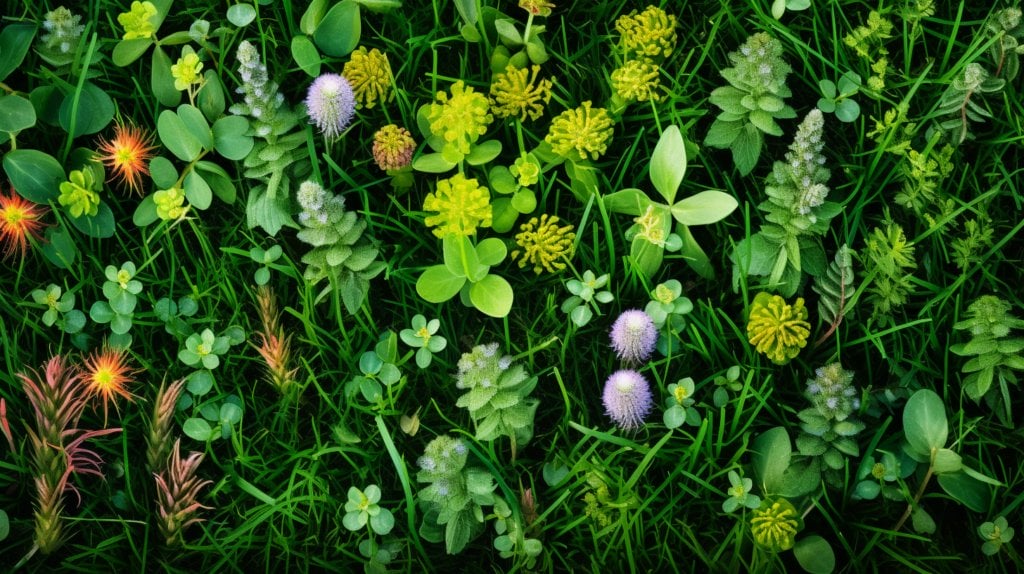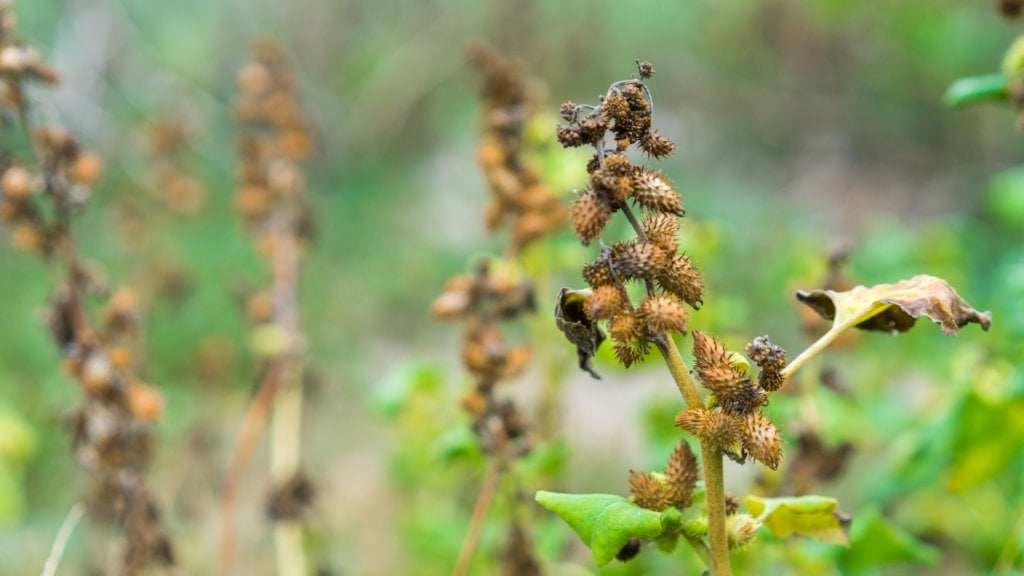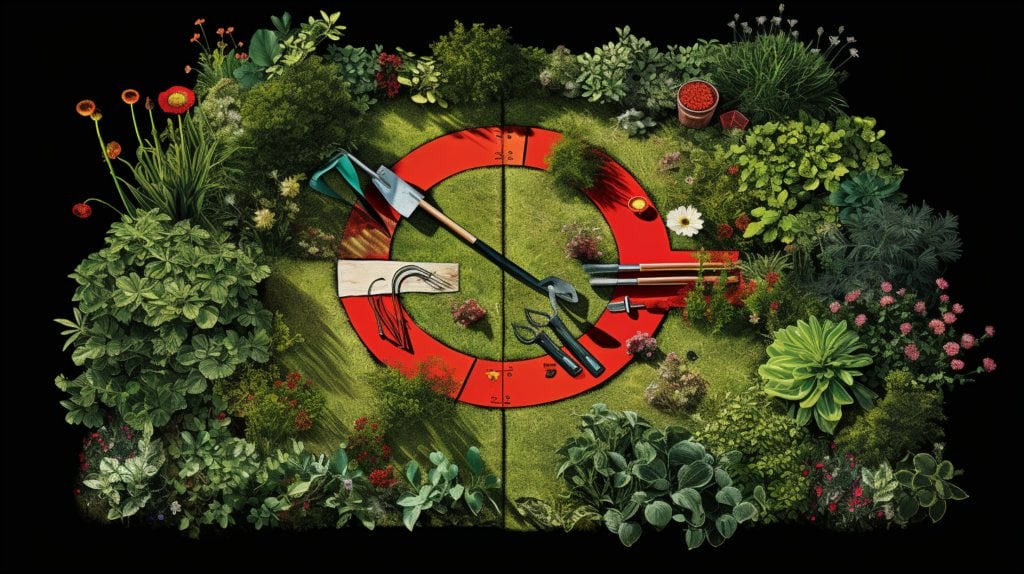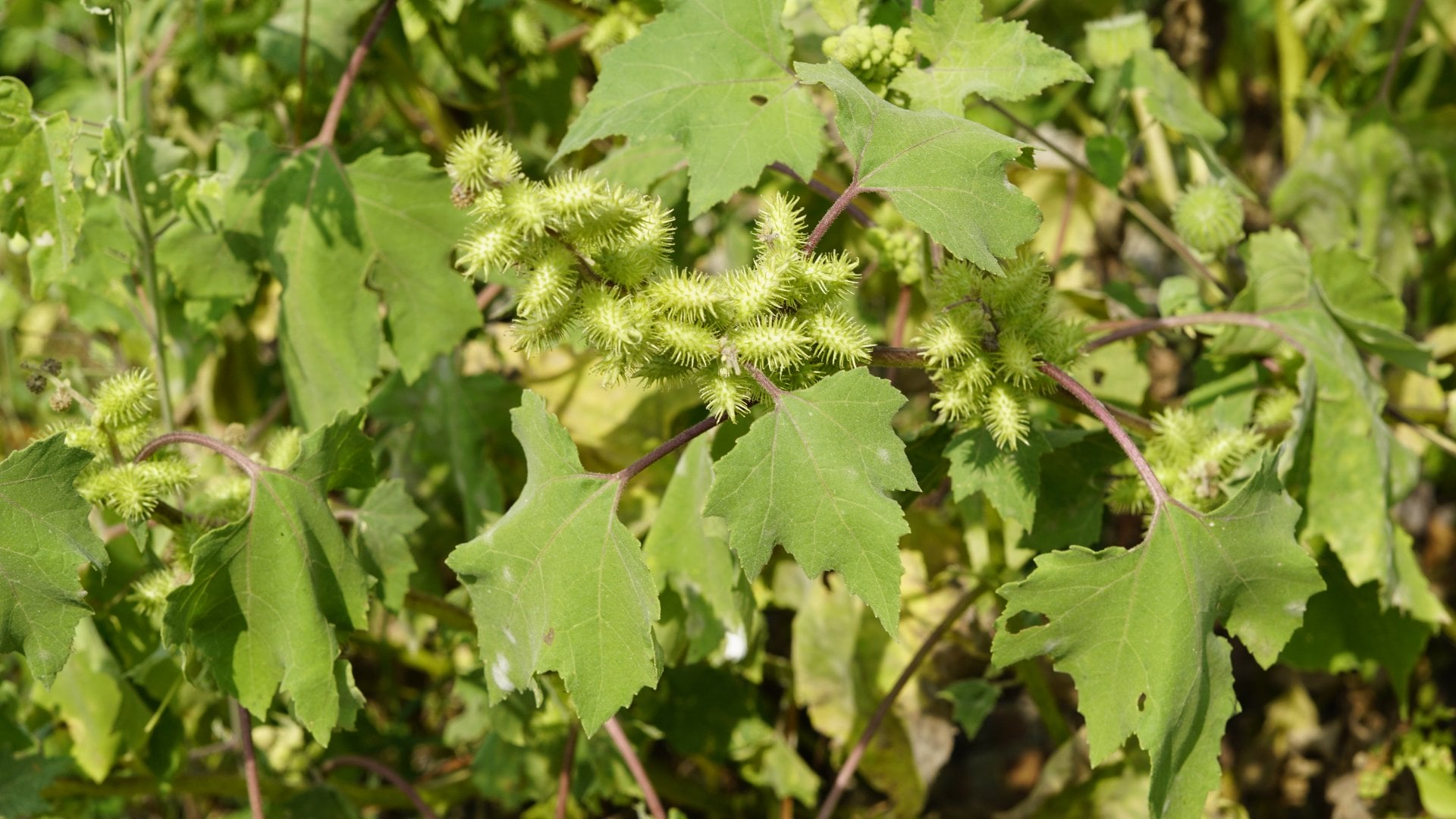Sticker Plant Identification: Sticker Weed Identification Guide
Greetings! I’ve spent several years grappling with sticker weeds, and through this journey, amassed a wealth of understanding about these troublesome flora. I’m excited to share these insights with you. Furthermore, I’ve developed a distinctive identification method for Sticker Plants, aiming to simplify the process for fellow gardening enthusiasts.
We’ll delve into the different types, learn effective elimination techniques, explore their life cycle, and consider prevention strategies. You’ll be equipped to tackle any sticker weed invasion on your lawn by the end.
Let’s get started – it’s time to reclaim your green space!
Key Takeaways
- Goathead has a prostrate growth habit and sharp two-pronged seeds.
- Sandbur has a tufted growth and spiky barbed seeds.
- Burr clover has small yellow flowers and circular pattern burs.
- Carpetgrass is low-growing and spread out like a carpet.
Different Types of Sticker Plant Identification in Your Grass

I’m about to guide you through identifying various types of sticker weeds in your grass. First, we’ll explore the unique characteristics of these pesky weeds and how you can use leaf shape, flower color, and growth habits to differentiate them.
We’ll also talk about the most typical types you’re likely to find in grassy areas.
Characteristics of Common Sticker Weeds and Sticker Plants
Let’s dive into the distinct characteristics of five types that you might find in your grass. Knowing these characteristics is a crucial first step to controlling sticker growth in your lawn.
- Goathead: These are easily identifiable by their prostrate growth habit and sharp, two-pronged seed pods.
- Sandbur: Notable for their tufted growth and spiky, barbed seed pods.
- Burr clover: This plant produces small yellow flowers and removes the different types of burs in a circular pattern. Lawn weeds like burr clover are often a nuisance, and controlling them is essential to maintain a moist, healthy lawn.
- Caltrop: Another common annual weed found in lawns and fields. Caltrops produce sharp, four-pointed stickers that can be painful to step on. Controlling this plant is crucial for a bright green and sticker-free lawn.
- Yellow vine: They can quickly spread across your lawn, overtaking the healthy grass. Using a weed killer is the most effective way to kill it.
In addition to these common sticky plants, various other burrs and field sandbur plants may invade your lawn. It’s important to stay vigilant and use the proper methods to keep your lawn free from these troublesome seed pods and sticky plants.
Using Leaf Shape, Flower Color, and Growth Habit to Identify Different Types of Stickers
When sticky plants are most prevalent in spring, I often use leaf shape, flower color, and growth habit as key identifiers to distinguish different types of sticky weeds in my grass.
You can quickly tell the difference between broadleaf and grassy types using leaf shape. Broadleaf weeds generally have broader leaves, while grassy types have thin, elongated leaves.
The flower color is another critical identifier. For example, burweed has small yellow flowers, while Sandbur has greenish flowers.
Lastly, the growth habit of identifying different types is also crucial. Some grow low and spread out like carpetgrass, while others, like the goathead, grow upright. They don’t grow very tall and are usually low-growing plants, a characteristic of these annoying weeds.
Common Types of Stickers Found in Grassy Areas
Although it’s a nuisance, identifying the types in my grassy areas can be interesting. It’s challenging to eliminate the different types, but knowing what I’m dealing with is half the battle.
- Burr Grass: This common type has sharp burrs that cling to everything they touch.
- Sandbur: Similar to burr grass, they have a unique way to remove by pulling them up before they seed.
- Goat’s Head: These are particularly nasty, with sharp stickers.
With these types identified, I’ve discovered ways to get control over these unwelcome guests. Knowledge is power; with it, I’m ready to reclaim my green spaces.
Techniques to Get Rid of Sticker Weeds

Now that we’ve identified different types of sticky weeds in our grass let’s turn our attention to getting rid of them.
From non-chemical methods to effective use of herbicides, I’ll share techniques that work for me.
We’ll also tackle the unique challenges of dealing with sticker weeds in lawns versus other landscapes.
Non-Chemical Ways To Get Rid of Sticker Weeds
I’m about to delve into the various non-chemical methods you can use to remove those pesky weeds effectively. These natural techniques aren’t only environmentally friendly but also cost-effective and safe for your children and pets.
Here’s a quick rundown of the top techniques:
- Pulling by hand: Although time-consuming, this method is the most straightforward. Ensure to wear gloves to protect your hands from it.
- Using a dethatching rake: This tool removes the weeds and their root systems, preventing regrowth.
- Employing weed-eating animals: Goats and chickens love feasting on weeds and can be an organic solution to your problem.
Using Herbicides Effectively on Sticker Weeds
Before sunrise is the best time to apply herbicides, as it allows the chemicals to soak thoroughly before the day’s heat evaporates. A targeted approach works best. Spraying the herbicide directly onto the weeds is essential, avoiding other plants as much as possible. Herbicides can be potent, and you don’t want to harm beneficial flora unintentionally.
When choosing a herbicide, I select selective types specifically targeting broadleaf plants like sticky weeds. This method dramatically reduces the risk to other plants. I also ensure I’m using the right concentration; too strong can damage the soil, while too weak won’t be effective.
Lastly, patience is critical; it’s a process that requires consistent effort. Eliminate these annoying weeds by following these steps to kill them effectively with herbicides.
Dealing with Sticker Weeds in Lawns VS. Other Landscapes
In dealing with sticker weeds, it’s crucial to consider the difference in techniques for lawns versus other landscapes. For lawns, the best approach is often regular mowing, which exhausts the weeds’ resources and prevents them from developing. They are usually low-growing plants.
For non-lawn landscapes, different methods work better. You’ll need to tailor your strategy to the specific situation.
Here are three techniques to consider:
- Manual pulling: This is effective when dealing with a small infestation.
- Mulching: It can suppress growth by blocking sunlight. As they are usually low-growing.
- Herbicides: When used correctly, they can be a potent weapon. There are many types of herbicides to choose from to eliminate weeds, including burr. Herbicides are a common choice to kill weeds in non-lawn landscapes, but they should be used carefully to prevent harm to other plants in the garden. Herbicides can effectively prevent them from spreading.
In any case, it’s essential to identify them correctly. One distinctive feature is their leaves, which often have a hard coating and sharp edges. They can be a nuisance, and identification is crucial to addressing the issue effectively. The flowers of the weed can also provide valuable clues for identification.
Explore the intricacies of your lawn care by gaining insight into the obstacles posed by other types of weed like tall weed with tiny white flowers. This is essential reading for anyone aspiring to have a lush and healthy lawn.
Controlling the Spread of Sticker Weeds in Your Lawn

Controlling sticker weeds in your lawn can be a challenge, but I’ve got some tips to share.
We’ll discuss how to keep your lawn healthy to prevent invasions.
We’ll discuss manual removal methods.
We’ll consider the best times of year for sticker weed control.
Maintaining Lawn Health to Prevent Sticker Weed Invasions
Maintaining my lawn’s health can significantly help prevent invasions. A healthy lawn is less susceptible to weed invasions. It can recover faster from any damage caused by these nasty intruders. It’s not as difficult as it might seem, but it does require regular and consistent care.
Here’s a simple plan to keep your lawn in top shape and discourage weeds:
- Regular watering: It’s essential to keep your lawn hydrated, but not overly so. Overwatering can lead to weed growth.
- Mowing to the correct height: Cutting your grass too short can expose the soil and create a perfect environment for weeds.
- Seasonal fertilizing: Proper fertilization gives your lawn the necessary nutrients, making it robust and less prone to weed invasions.
With these measures, you’ll see less sticky weeds and more lush, healthy grass. They are easy to deal with when you have a healthy lawn. Additionally, many ways to eliminate it include removing weeds by hand.
Some are yellow vines, and you might encounter many different types of sticky weeds. These weeds can grow in various soil types, usually found in lawn grass.
It’s essential to be aware of the growth of any plants in your lawn and take measures to prevent weed problems. Broadleaf weeds can also be a concern, and it’s essential to ensure that weeds do not grow freely in your lawn.
By following the proper lawn care practices, you can maintain a beautiful lawn without the intrusion of sticky weeds or burweed.
Manual Removal Methods for Eliminating Stickers
Despite my best efforts to maintain a healthy lawn, sometimes sticker weeds sneak in, and I’ve got to use manual removal methods to eliminate weeds.
The first step I take is to identify the sticky plants, as they can often blend in with the grass. Once identified, I use a hand weeder to gently pry the plant from the ground, ensuring to remove the entire root system to prevent regrowth.
I then dispose of the weeds properly, making sure not to spread the seeds.
Consider a lawn renovation if you’ve got a severe infestation. This involves killing the existing lawn and reseeding it. It’s drastic, but it can be effective. Sticker weeds are a group of weed plants that can be pretty resilient.
Time of Year Considerations For Sticker Weed Control
When tackling weeds with stickers, it’s crucial to consider the time of year, as some seasons are more conducive to their growth and spread. The best time to deal with these pesky plants varies.
Still, there are a few critical periods you definitely shouldn’t overlook:
- Early Spring: This is when sticker weeds start to sprout. Applying a pre-emergent herbicide can prevent seeds from germinating.
- Summer: Weeds grow rapidly in warm temperatures. Regular mowing and post-emergent herbicides can keep them in check.
Fall is a great time to strengthen your lawn, making it harder for weeds with stickers to take hold next year.
Understanding the Lifecycle of Common Sticker Weeds

Let’s now turn our attention to understanding the lifecycle of typical stickers.
We’ll explore the usual germination times, the importance of spotting these pesky plants early, and their reproductive and spreading habits.
Typical Germination Times for Different Types of Sticker Weeds
I’m starting this section by examining the germination times of several types of sticker weeds, an essential step in understanding their lifecycle. Knowing the germination times can help in formulating an effective plan for weed management.
Now, let’s dive into the specifics:
- The infamous Sandbur typically germinates in early spring when soil temperatures reach 60°F.
- Goatheads, or Puncture Vines, sprout a little later in late spring or early summer.
- Burclover usually starts germinating in fall and continues throughout winter.
It’s important to note that these times can vary depending on environmental conditions. By understanding these germination times, you’re better equipped to anticipate and combat many weeds. Mastery, after all, begins with understanding.
Importance of Early Detection in Controlling Sticker Weed Population
In the relentless battle against sticker weeds, it’s crucial to grasp the significance of early detection for managing their numbers. I can’t stress enough how essential it is to identify these unwanted invaders at the earliest stages of their life cycle. This is when many sticker weeds are most vulnerable and easiest to eradicate. Miss this window, and you’re battling a mature plant, which can be a formidable foe.
You can strategize your approach by understanding the life cycle of common sticker weeds. You’ll know when to expect the first sprouts to begin to produce seeds and when those seeds will disperse. This knowledge allows you to intervene at the most opportune moments, keeping these pesky weeds and lawns in check.
How Sticker Weeds Reproduce and Spread
I’ve discovered that the persistence of sticker weeds primarily hinges on their unique reproduction and spreading methods. To properly combat these tricky plants, understanding their lifecycle is vital.
Sticker weeds reproduce through seeds, which are encased in burrs. These burrs attach to anything passing by, thus spreading the seeds over a wide area. Sticker weeds also reproduce by producing seeds, and these seeds are encased in burrs, also called stickers. These stickers are usually covered in burrs that attach to anything passing by, thus spreading the seeds over a wide area.
The burrs can remain dormant in the soil for several years, waiting for the right conditions to germinate. Weeds without the right conditions may lie dormant for a long time.
Once they sprout, they grow rapidly, quickly taking over any available space. These weeds can quickly take over any open space, outcompeting existing stickers, plants and grass, and other vegetation.
By knowing how these weeds spread, we can develop more effective strategies for managing them. Sticker weeds, like any grass or plants that produce burrs, can be challenging to manage if not properly understood.
Prevention Strategies for Sticker Weeds

Now, let’s discuss some prevention strategies for sticker weeds.
We’ll examine how effective lawn care practices can hinder weed growth and how soil health is vital in preventing these pesky plants.
Also, we’ll touch on how natural predators can be advantageous in preventing sticker weeds.
Effective Lawn Care Practices to Prevent Sticker Weed Growth
Although they’re challenging to manage, I’ve discovered that a few simple lawn care strategies can effectively prevent the growth of sticker weeds.
These techniques can be easily incorporated into your usual gardening routine:
- First, mowing your lawn regularly and at the right height can discourage the growth of these pesky weeds. They thrive in overgrown areas, so keeping the grass trim is vital.
- Second, watering your lawn deeply but less frequently encourages the grass roots to grow deeper, making it harder for sticker weeds to compete.
- Lastly, regular fertilization keeps your lawn healthy and robust, better equipped to fend off any weed invasion.
Incorporating these strategies can save you from a prickly situation in the future. Remember, prevention is always easier than eradication.
Role of Soil Health and Fertility in Preventing Weed Issues
In my experience, maintaining the health and fertility of your soil is crucial in preventing the growth of sticker weeds. Healthy soil tends to support the growth of your desired plants, making it more challenging for weeds to compete. It’s not just about adding nutrients; it’s about balance. Over-fertilizing can lead to an excess of certain nutrients, causing a spike in weed growth.
So, how do you maintain this balance? Regular soil testing is critical. This will let you know what your soil needs and doesn’t need. Composting is another excellent strategy. It not only recycles waste but also improves soil structure, promotes healthy root development, and even suppresses diseases and pests.
Suppose you want to get rid of these annoying weeds. In that case, taking care of your soil is a fundamental step in eliminating the different types of weeds that may infest your garden.
The Advantage of Natural Predators in the Control of Sticker Weeds
I’ve found that one effective way to control sticker weeds is by leveraging the advantage of their natural predators. These predators are often insects or birds that feed on the seeds or foliage of the weed, reducing its ability to reproduce and spread.
The key to this strategy is knowing which creatures are allies in our battle against sticker weeds.
Here’s a short list of those you might want to encourage in your garden:
- Certain types of beetles, known for devouring weed seeds
- Birds like finches and sparrows that feed on seeds and insects
- Parasitic wasps that lay eggs in weed stems, reducing growth
Conclusion
So, there you have it. Identifying, controlling, and preventing sticker weeds is easy once you know what to look for.
It’s all about understanding their lifecycle and using the right strategies to stop their spread. This guide has set you on the right path to a healthier, sticker-free lawn.
Remember, persistence is vital. Keep at it, and you’ll soon be enjoying a lush, green yard free of pesky sticker weeds.
Frequently Asked Questions
What Are the Health Risks Associated With Contact With Sticker Plants?
In my experience, touching them can cause skin irritation, allergic reactions, and possible infections from the plant’s sharp spines. It’s essential to wear protective clothing when handling these plants to avoid such risks.
Can Sticker Plants Have Any Beneficial Uses?
They can be beneficial. They’re often used in herbal medicine for their anti-inflammatory properties. Plus, they’re great for wildlife, providing food and habitat for many insects and birds.
How Can I Safely Handle Sticker Plants Without Getting Pricked?
To handle them without getting pricked, I’d recommend using protective gloves. Thick gardening gloves work well. Also, using proper gardening tools can help you avoid direct contact with the plant’s stickers.
What Kind of Wildlife or Insects Might Be Attracted to Sticker Plants?
In my experience, various insects, particularly bees and butterflies, are attracted to it. Some birds might also find shelter in these plants despite their prickly nature due to the protection they provide.
Are There Any Specific Weather Conditions That Favor the Growth of Sticker Plants?
They thrive in dry, warm climates. They’re drought tolerant and don’t fare well in overly saturated soil. So, they’re ideally suited for areas with less rainfall and plenty of sunlight.







